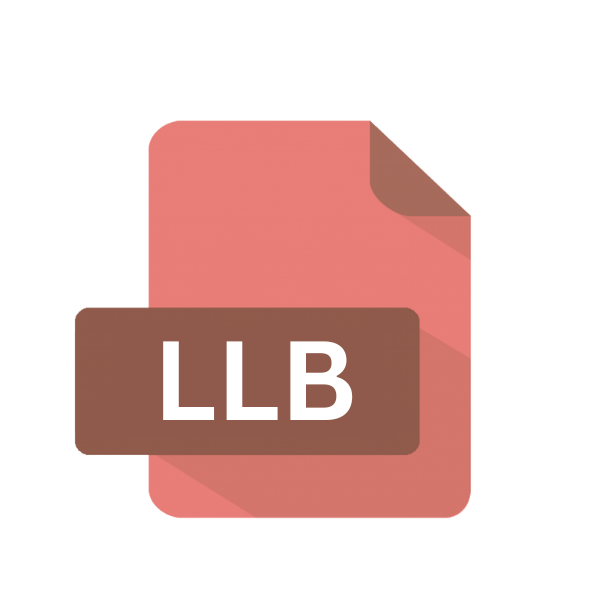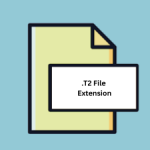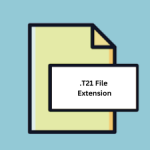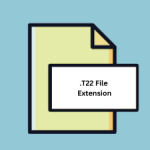.LLB File Extension

LabVIEW Library File
| Developer | National Instruments |
| Popularity | |
| Category | Data Files |
| Format | .LLB |
| Cross Platform | Update Soon |
What is an LLB file?
The .LLB file extension is primarily associated with LabVIEW, short for Laboratory Virtual Instrument Engineering Workbench.
LabVIEW is a powerful tool developed by National Instruments, designed to simplify complex system design through graphical programming, also known as G programming.
.LLB files serve as LabVIEW Library Files, encapsulating a collection of VI (Virtual Instrument) files, subVIs, and other resources into a single, easily distributable package.
More Information.
When LabVIEW was first introduced, it revolutionized the way engineers and scientists approached system design and automation.
As projects grew in complexity, managing numerous VI files became cumbersome. To streamline this process, National Instruments introduced .LLB files as a means to consolidate related VIs and resources into a single, portable entity.
This simplification not only enhanced project organization but also facilitated easier sharing and distribution of LabVIEW applications.
Origin Of This File.
The origin of .LLB files can be traced back to the inception of LabVIEW in the late 1980s. National Instruments developed LabVIEW to address the growing complexity of system design and data acquisition processes.
.LLB files emerged as a solution to manage and organize various VI files and resources efficiently within LabVIEW projects.
File Structure Technical Specification.
The structure of .LLB files is designed to encapsulate multiple VI files, subVIs, shared libraries, and other resources into a unified package.
This package format enables easy navigation and access to all included components within the LabVIEW environment.
.LLB files typically contain a hierarchical structure, mirroring the organization of the encapsulated components within LabVIEW projects.
From a technical perspective, .LLB files are binary files optimized for LabVIEW’s runtime environment. They incorporate compression techniques and data structuring mechanisms to ensure efficient storage and retrieval of VIs and resources.
.LLB files may include metadata and index information to facilitate fast lookup and loading of components during runtime.
How to Convert the File?
Converting .LLB files (LabVIEW Library Files) involve extracting their contents for use outside the LabVIEW environment. Here’s how you can convert them:
Using LabVIEW:
- Open LabVIEW and create a new project or open an existing one.
- Add the .LLB file to the project.
- Extract individual VIs or resources by right-clicking on them and selecting “Save As…” to save them in a different format.
Third-Party Tools:
- Utilize LabVIEW package managers or converters available from third-party sources. These tools may offer options to extract or convert .LLB files into different formats.
- Be cautious and ensure the reliability and compatibility of such tools with your LabVIEW version.
Manual Extraction:
- Rename the .LLB file extension to .zip.
- Extract the contents using file compression software.
- Manually copy or save individual VIs and resources in the desired format.
Advantages And Disadvantages.
Advantage:
- Organization: .LLB files streamline project organization by consolidating related VIs and resources into a single package.
- Portability: The encapsulated nature of .LLB files enable easy sharing and distribution of LabVIEW applications.
- Efficiency: .LLB files optimize resource loading and retrieval, enhancing runtime performance.
- Version Control: Managing project versions becomes more manageable with .LLB files, as they represent a cohesive snapshot of project components.
- Security: By bundling resources into a single file, .LLB files can help protect intellectual property and prevent unauthorized access to individual VIs.
Disadvantages:
- Dependency Management: Inclusion of resources within .LLB files can lead to dependency issues if not managed carefully.
- Limited Compatibility: .LLB files are primarily intended for use within the LabVIEW environment, limiting their interoperability with other platforms and software tools.
- Difficulty in Versioning: Updating individual components within .LLB files without affecting others can be challenging, potentially leading to versioning conflicts.
- Debugging Complexity: Debugging code contained within .LLB files may pose challenges due to the encapsulated nature of the resources.
How to Open LLB?
Open In Windows
Using LabVIEW:
- Ensure LabVIEW is installed on your Windows system.
- Double-click the .LLB file, and it should automatically open within the LabVIEW environment.
Open In Linux
Using Wine (Compatibility Layer):
- Install Wine on your Linux system.
- Download the Windows version of LabVIEW.
- Install LabVIEW using Wine.
- Double-click the .LLB file, and it should open within the LabVIEW environment running on Wine.
Open In MAC
Using LabVIEW for macOS:
- Install LabVIEW for macOS on your Mac computer.
- Double-click the .LLB file, and it should open within the LabVIEW environment natively.
Open In Android
- LabVIEW Web Services: Develop LabVIEW Web Services on a compatible platform and access them through a web browser on Android for indirect access to LabVIEW functionality.
- LabVIEW NXG: Explore LabVIEW NXG for potential mobile compatibility or alternative methods to run LabVIEW applications on Android devices.
- Third-Party Solutions: Look into third-party LabVIEW viewers or converters that might offer cross-platform compatibility, ensuring they support Android devices and the specific LabVIEW version used.
Open In IOS
- LabVIEW Web Services: Develop web services on LabVIEW and access them via a browser on iOS.
- LabVIEW NXG: Explore mobile compatibility options or alternative methods within LabVIEW NXG.
- Third-Party Tools: Look for cross-platform LabVIEW viewers or converters compatible with iOS.
Open in Others
Using Virtual Machines:
- Set up a virtual machine running Windows or macOS on platforms like Linux.
- Install LabVIEW within the virtual machine environment.
- Open the .LLB file within LabVIEW running on the virtual machine.













